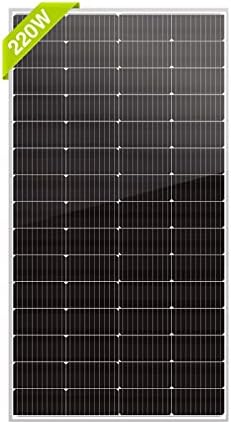## Harnessing the Sun: Your Comprehensive Guide to Off-Grid Solar Systems
There was a moment on a crisp autumn morning when I stood outside, a cup of steaming coffee in hand, and watched my first solar panel capture the soft rays of the rising sun. The golden light danced across its surface, and I felt an exhilarating fusion of freedom and empowerment. Lasting, self-sufficient energy wasn’t just a dream anymore; it was my new reality. In that picturesque moment, I realized the sun possessed boundless potential, ready to illuminate not just my space but my life. Ready to explore the limitless power of solar energy? Let’s dive into the world of off-grid solar systems and how to harness the sun effectively.
### Understanding Off-Grid Solar Systems
An off-grid solar system enables you to generate and use solar energy independently, without relying on traditional power grids. This sustainable, self-sufficient lifestyle is perfect for those looking to reduce their carbon footprint and gain independence from utility companies. Essentially, these systems harness sunlight to generate electricity, which is stored in batteries for later use.
### The Components of an Off-Grid Solar Solar System
To effectively harness solar energy, it’s essential to understand the key components that make up an off-grid solar system:
1. **Solar Panels**: These are the heart of your system, converting sunlight into usable electricity. They come in various types, including monocrystalline, polycrystalline, and thin-film—each with its own benefits and drawbacks.
2. **Charge Controller**: A charge controller helps regulate the flow of electricity from the solar panels to the batteries, preventing overcharging and damage. It’s essential for maintaining battery health.
3. **Batteries**: Storage is critical in an off-grid system. Batteries store the generated energy for use during times when sunlight is unavailable, such as at night or on cloudy days. Lithium-ion and lead-acid batteries are the most common options.
4. **Inverter**: An inverter converts the DC electricity generated by the solar panels and stored in batteries into AC electricity, which is used by most household appliances.
5. **Mounting System**: Properly mounting your solar panels ensures they obtain the maximum sunlight exposure. Whether fixed or adjustable, a good mounting system is crucial for efficiency.
6. **Electrical Wiring**: Safe and efficient wiring connects all components, ensuring that energy flows smoothly from the solar panels to your home.
### Designing Your Off-Grid Solar System
When designing an off-grid solar system, several crucial factors need to be considered:
1. **Energy Needs Assessment**: Start by calculating your daily energy consumption. This will help you determine the number of solar panels and battery capacity you’ll need. Consider appliances, lighting, heating, and any other electric devices you plan to use.
– *Pro Tip*: Create a detailed list of appliances, noting their wattage and how often you use them. This will provide a clearer picture of your energy needs.
2. **Solar Panel Selection**: Choose the right type of solar panels based on your budget, space availability, and efficiency needs. Monocrystalline panels are often more efficient but may come at a higher price.
3. **Battery Bank Sizing**: The size of your battery bank will depend on how much energy you need to store. A good rule of thumb is to have enough batteries to cover at least two days of energy needs to ensure you have backup power.
4. **Inverter Sizing**: Ensure your inverter can handle the total wattage of the appliances you’ll be using simultaneously.
5. **Site Analysis**: Determine the optimal placement for your solar panels. Factors like shading from trees or buildings and the angle of your roof will affect energy generation.
### Installation Process
While some homeowners may choose to hire professionals for installation, those with handy skills might want to go the DIY route. Here’s a simplified overview of the installation process:
1. **Site Preparation**: Clear the area where the panels will be installed. If you’re mounting them on a roof, ensure the structure can handle the weight and installation.
2. **Install Mounting System**: Begin by installing the mounting brackets securely. For roof mounts, use a level to ensure the panels are positioned optimally.
3. **Lay Out Solar Panels**: Place the solar panels on the mounts and secure them based on the manufacturer’s instructions.
4. **Wiring Connections**: Connect the panels to the charge controller, then link it to the batteries and the inverter. Ensure all connections are secure and waterproof to prevent damage.
5. **Testing**: Once everything is connected, perform a test to ensure the system is functioning correctly. Monitor performance for a few days to ensure optimal output.
### Maintenance Tips
1. **Regular Cleaning**: Dust, leaves, and debris can diminish the efficiency of your solar panels. Cleaning them a few times a year will help maintain their performance, especially after rainstorms, which may leave dirt and grime.
2. **Inspect the System**: Regularly check the wiring, connections, and the condition of your batteries. Look for signs of wear or corrosion and address any issues promptly.
3. **Battery Care**: Depending on the type of batteries you use, perform maintenance such as checking electrolyte levels in lead-acid batteries or monitoring the condition of lithium-ion packs.
4. **Monitor Performance**: Use monitoring tools to track energy production and usage. This data can help you understand your consumption patterns and identify any inefficiencies in your system.
### Pro Tips for Optimal Solar Power Usage
1. **Energy Efficiency First**: Before investing solely in a solar system, implement energy-efficient appliances and habits to reduce your overall consumption. This can lower your initial investment and improve your system’s efficiency.
2. **Consider Battery Technology**: While lithium-ion batteries are typically more expensive, they often have a longer lifespan and require less maintenance than lead-acid batteries. Analyze the long-term cost versus initial investment.
3. **Embrace Natural Light**: Utilize natural light during the day to cut down on your energy needs. Consider designing your living space to maximize daylight, reducing the reliance on artificial lighting.
4. **Seasonal Adjustments**: Adjust your energy usage based on seasonal changes. For example, conserve energy during shorter winter days and utilize power from the longer summer days.
### Economic and Environmental Benefits of Off-Grid Solar Systems
Transitioning to an off-grid solar system provides not only financial benefits but also contributes positively to the environment:
1. **Long-Term Saving**: While initial setup costs may seem high, solar energy drastically reduces your monthly energy expenses. Plus, many states offer tax incentives and rebates for solar installations.
2. **Energy Independence**: By producing your own energy, you’re insulated from rising energy costs and market fluctuations, achieving independence from utility providers.
3. **Environmental Impact**: Solar power reduces greenhouse gas emissions, promoting a healthier planet. By harnessing the sun’s energy, you’re actively combatting climate change.
### Conclusion
Harnessing the sun through a comprehensive off-grid solar system offers incredible benefits—both for your wallet and the planet. With careful planning, installation, and maintenance, you can enjoy energy independence and sustainability. So grab those solar panels, take charge of your energy future, and let the sun power your adventure.
Remember, the journey may require some learning and adjustments along the way, but the payoff of living freely and sustainably makes every effort worth it!
### Call to Action
Ready to take the plunge? Start your journey towards energy independence today! Research different solar system options, consult with experts, and design a plan that fits your lifestyle. Every step you take toward harnessing the sun is a step toward self-reliance and sustainability!



